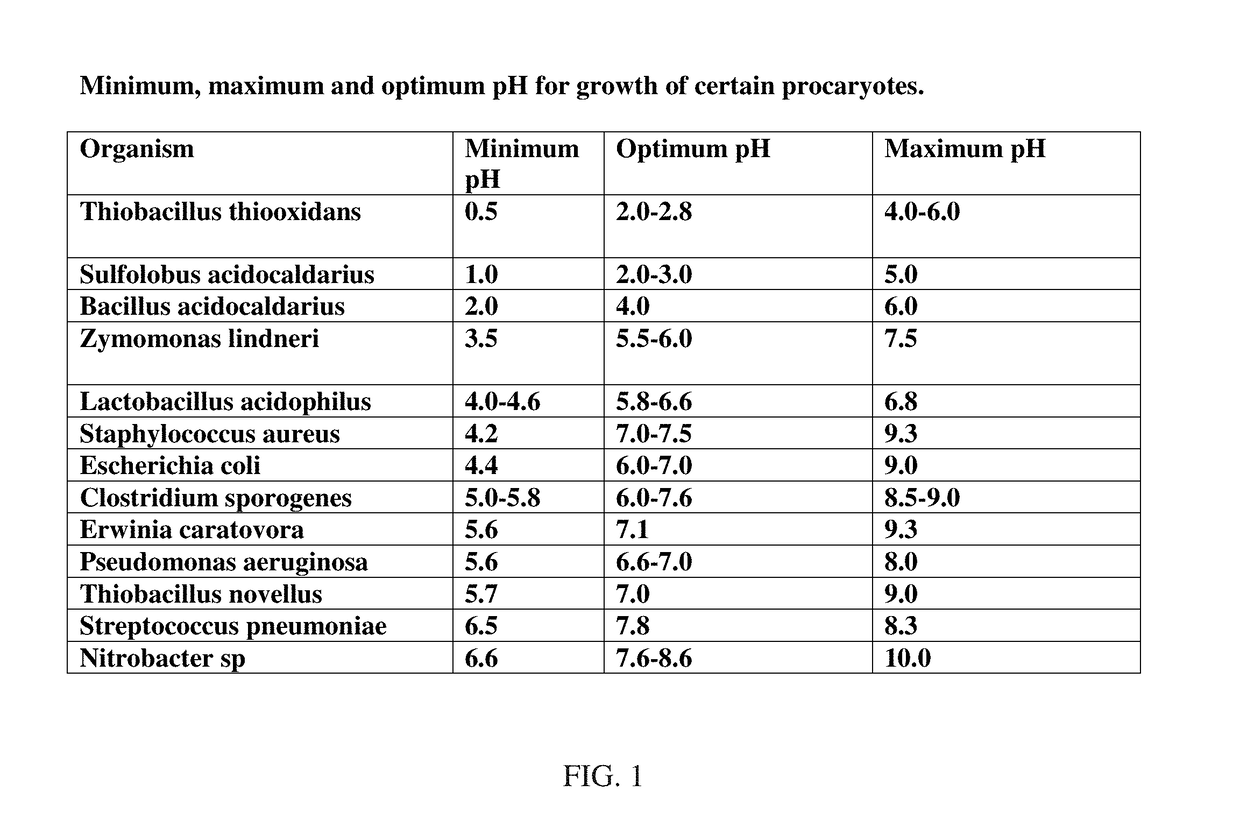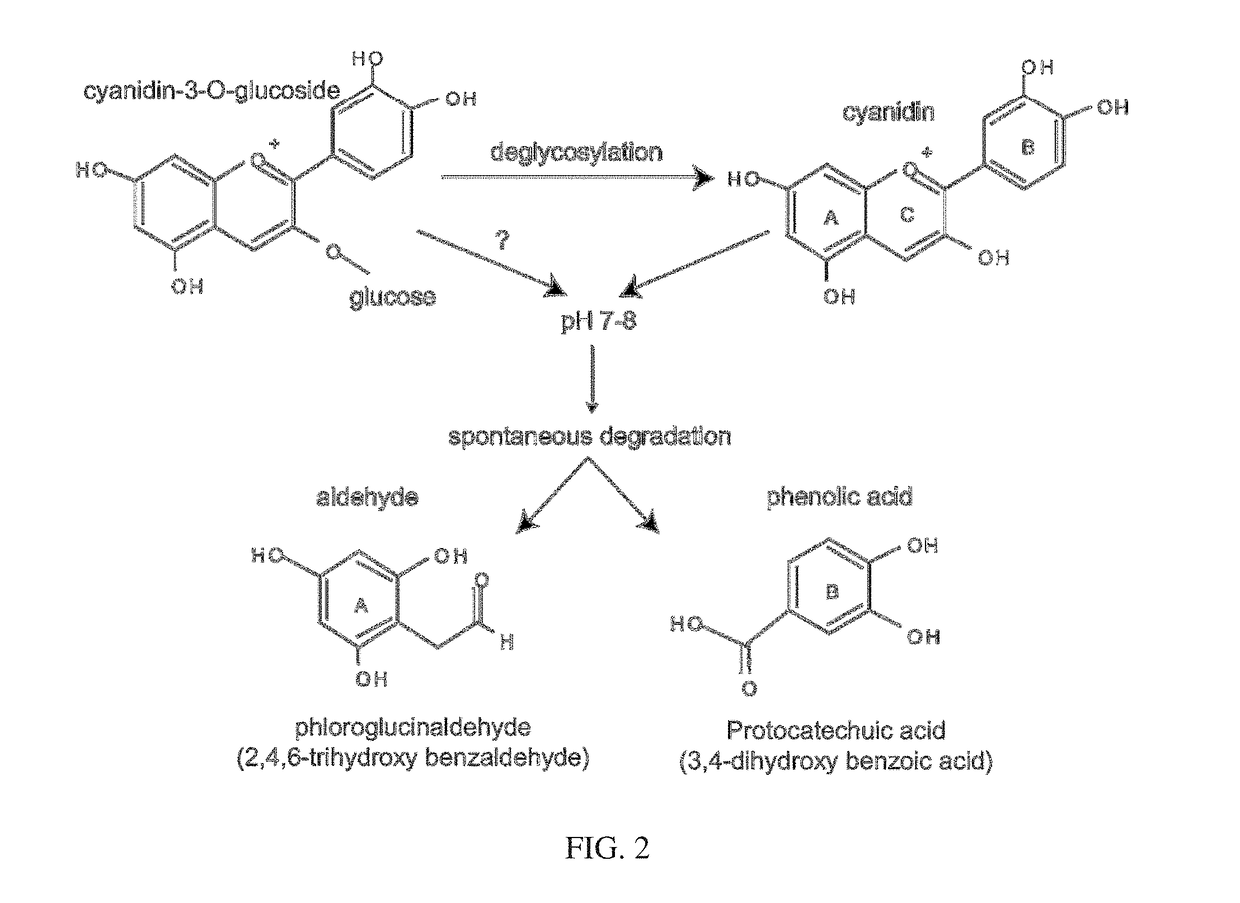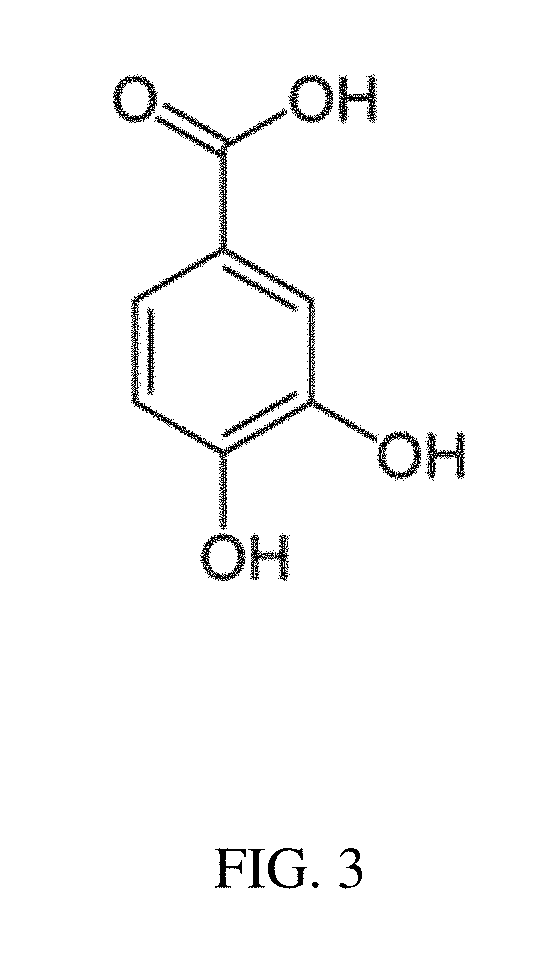Antimicrobials and methods of use thereof
- Summary
- Abstract
- Description
- Claims
- Application Information
AI Technical Summary
Benefits of technology
Problems solved by technology
Method used
Image
Examples
example 1
Vitro Studies for Antimicrobial Susceptibility Testing of Anthocyanins, Anthocyanidins, or Metabolites and Compounds Thereof
[0190]This example describes the method for testing the antimicrobial susceptibility of anthocyanins, anthocyanidins, or metabolites and compounds thereof. The Kirby-Bauer method of disc diffusion was used for testing, following a standard set of procedures recommended by the NCCLS. In this methodology, a set of discs saturated with either testing compounds or a control was placed on inoculated agar plates. The plates were inoculated with organisms listed in the tables provided in FIG. 6, including C difficile, P. acnes, C. prefringens, L. casei, C. albicans, E. coli, ATTC 8739 and ATCC 43895, S. aureus, S. mutans, S. pyogenes, P. aeruginosa and K. pneumonia. The control sample was amoxicillin, an antimicrobial with very effective broad spectrum antibiotic properties. Samples included delphinidin, pelargonidin, cyanidin Cl, 28% cyanindin-3-glucoside (C3G), prot...
example 2
use Model to Determine Dose Levels and Intervals of Test Samples
Methods:
[0196]Mice had back skin tape stripped and the stripped site (wound) was infected with P. aeruginosa (ACTA 9027). The test reagents were applied topically in an aqueous solution on the stripped site at two hours and daily for four days.
[0197]Cyanidin 3-glucoside (C3G), an anthocyanin, and its main metabolite PCA were formulated and tested at several doses. The aqueous carrier was water. The C3G formulation included 50 mM, 100 mM and 200 mM dose concentrations. Similarly, the PCA formulation included at 50, 100 and 200 mM dose concentrations.
Results
[0198]Results were collected from the mice at day five. Both C3G and PCA decreased the bacterial burden; however, none were statistically significant. See FIG. 9A. There was a trend towards a decreasing concentration of PCA, with 50 mM being the most effective. The most effective dose of C3G was 100 mM. It is contemplated that because C3G degrades to PCA in this enviro...
example 3
use Model to Further Determine Effective Dose Levels and Dose Intervals of Test Samples
Methods:
[0199]Mice had back skin tape stripped and the stripped site (wound) was infected with P. aeruginosa (ACTA 27853). The test reagents were applied topically in an aqueous solution on the stripped site at two hours and daily on day 1, 2 and 3.
[0200]C3G, an anthocyanin and its main metabolite PCA were formulated and tested at several doses. The aqueous carrier was water. The C3G formulation included 100 mM and 200 mM dose concentrations and the PCA formulation included 25 and 50 mM dose concentrations.
Results
[0201]Results were collected from the mice at day two and four. Both C3G and PCA decreased the bacterial burden at 48 and 96 hours. (See FIG. 9B). The most significant decrease of bacteria was observed at 25 mM of and 100 and 200 mM of C3G. Although PCA at 25 mM reduced the bacterial burden at both time periods, its activity was statistically significant at 48 hours. C3G at both 100 mM an...
PUM
| Property | Measurement | Unit |
|---|---|---|
| Fraction | aaaaa | aaaaa |
| Fraction | aaaaa | aaaaa |
| Fraction | aaaaa | aaaaa |
Abstract
Description
Claims
Application Information
 Login to View More
Login to View More - R&D
- Intellectual Property
- Life Sciences
- Materials
- Tech Scout
- Unparalleled Data Quality
- Higher Quality Content
- 60% Fewer Hallucinations
Browse by: Latest US Patents, China's latest patents, Technical Efficacy Thesaurus, Application Domain, Technology Topic, Popular Technical Reports.
© 2025 PatSnap. All rights reserved.Legal|Privacy policy|Modern Slavery Act Transparency Statement|Sitemap|About US| Contact US: help@patsnap.com



